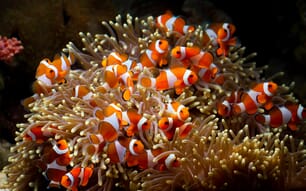In 2008, the Vietnamese seafood sector earned US$4.27 billion from exports, an amount US$3.75 billion greater than it achieved in 2007. The Ministry of Agriculture and Rural Development (MARD) attributes this vast increase to an enlarged market share and diversified product range, but this wouldn't have been possible had it not been for the widescale initiative to enhance processing technology throughout the country. This single act has allowed Viet Nam to boost its domestic production sector, begin meeting worldwide demand for seafood products, and open up previously closed export markets.
At the beginning of the year, MARD reported that the EU accounted for 27 per cent of its export market share. Japan and the republic of Korea took 19 per cent each, whilst the US took 13 per cent. Shrimp remained the key export product, but the value of tra and basa catfish continued rising, equaling this value at the mid-point of the year. However, contrary to what these positive statistics tell us, all is not well beneath the surface.
Industry Turmoil
The products of this crisis are evident all over Viet Nam. Along the Mekong Delta 40 per cent of the region's catfish breeding ponds now lie abandoned and 25 per cent of these farmers have gone bankrupt and many others are teetering on the edge. As a result, catfish output on the Mekong Delta is expected to fall by 40 per cent this year. Even the once lucrative shrimp farmers of the area have suffered a series of poor harvests, leaving many farmers with no option but to sell their farms to pay off mounting debts.
Similarly, the new processing workshops by Cuu Long River Delta have been running at just 20-30 per cent of capacity. Tran Thien Hai, Chairman of the Vietnamese Association of Seafood Exporters and Producers (VASEP), reported that the workshops are seriously lacking material shrimp. Consequently, processors are unable to satisfy export orders.
None of this bares well on the foreign market. The value of Viet Nam's seafood exports are likely to drop by 15-20 per cent in this year alone, revealed VASEP statistics. The main products: shrimp and tra fish will be hit the worst. A recent rise in catfish prices failed to lure farmers back to the Mekong Delta, presenting a worrying indication of times to come.
According to Nguyen Huu Dung, Deputy Chairman at VASEP, the seafood industry as a whole has suffered from both severe oversupply and severe shortages. Fish breeding quantities have been poorly regulated and processors have been unable to guarantee consumption of farmers entire output. One of the contributors to this fragile market lies at the root of its boom. The rise of the modern processing establishments could now be taking the biggest toll on fish farmers - demanding production levels that cannot be sustained.
Production and processing sectors need to find a source of equilibrium if the seafood sector is to become stable, and it must get this balance right before the industry structure collapses much further. Whilst the government is hopeful of tackling this problem in the near future, others lie in store just around the corner.
Trouble Under the Surface
A scenario on rising sea levels carried out by the Can Tho University's Climate Change Research Institute showed how severe the potential threats of rising sea levels could be for Vietnamese fish farmers. Global warming forecasts indicate that about 210,000sq/km of coastal land in the the Mekong Delta will be submerged in just 10 years.
The region's aquaculture is also under threat from increased salinity in the delta, occuring during draughts when sea water is able to flow further inland. This process results in a lack of freshwater sources throughout Viet Nam as a whole, putting extra pressure on the farmers that use it. Shorter rainy seasons, predicted for the future, will add to this problem.
The Worldwide Fund for Nature (WWF) Greater Mekong Programme has recommended a variety of water management measures that should be undertaken. Already MARD's Construction Management Department has planned to help the people of the Mekong Delta cope through an irrigation development project expected to begin later this year.
Water supply is not only at threat from climate forces. The expansion of rice fields has brought about a huge increase in fertiliser and pesticide run off. Whilst waste from aquaculture is not treated properly and leaks out into the surrounding waters. Water resources in the Mekong Delta are seriously polluted said the Environmental Agency under the Ministry of Natural Resources and Environment.
According to the agency, E.coli content is two to five times higher than the permitted level and chemical oxygen demand exceeds the threshold by one to three times. Figures from the Institute for Aquatic Economics and Planning has put the estimated overall aquaculture mud and waste volumes at 500 million cubic metres a year. Other polluters also go unsanctioned. 6,000 aquaculture farmers recently protested against damage caused to their farms by a huge industrial plant just outside of Ho Chi Minh City. High levels of pollution cause issues of food safety for the industry and its reputation as a whole.
Positive Signs for an Emerging New Brand
On 20 December 2008, Russia ordered a halt to Vietnamese catfish exports over concerns for food safety. In February of this year, they dispatched a team of experts to look into production and processing conditions. According to report from a Vietnamese news agency, the Russian response has been positive and it is expected that they will soon agree to reopen markets.
The outcome of the Russian visit may be attributed to Vietnam's new food safety and hygiene rules implemented late last year and this could be the key to its future success. Dr. Andrew Graffham at the UK Natural Resources Institute says that if Viet Nam can produce a recognisable brandname for its products then foreign sales would quickly increase.
Vietnamese seafoods has proved popular in Europe due to their relatively low levels of chemical residues by comparison with other Asian seafood sources. Dr Graffham argues that a "Made in Viet Nam" brand would add more value to their products, but for this brand to have a positive effect food safety and environmental concerns need to be a top priority.
International experts have agreed that Viet Nam should apply a sustainable ecosystems approach to ensure future aquaculture operations are consistently successful. The recent introduction of Pangasius aquaculture in the Cuu Long Delta is said to be the fastest of its kind in the world, achieving a production level of 1.2 million tonnes in less than a decade. If Viet Nam can manage this new product correctly it is sure to be a huge success on the global market.
The industry also needs to come together to avert the ensuing crisis. Vietnamese exporters need to establish close ties with importers to ensure market stability, says Deputy Minister of Agriculture and Rural Development, Luong Le Phuong. According to him, the cooperative effort must take place in all aspects of seafood production and trading.
"In particular, the State must cooperate with the association of fisheries enterprises while seafood processing and export enterprises need to cooperate with farmers. Seafood processors and exporters should also work together," he said. Viet Nam may face a difficult and uncertain future, but the potential i those abandoned fish farms is in no doubt.
March 2009




